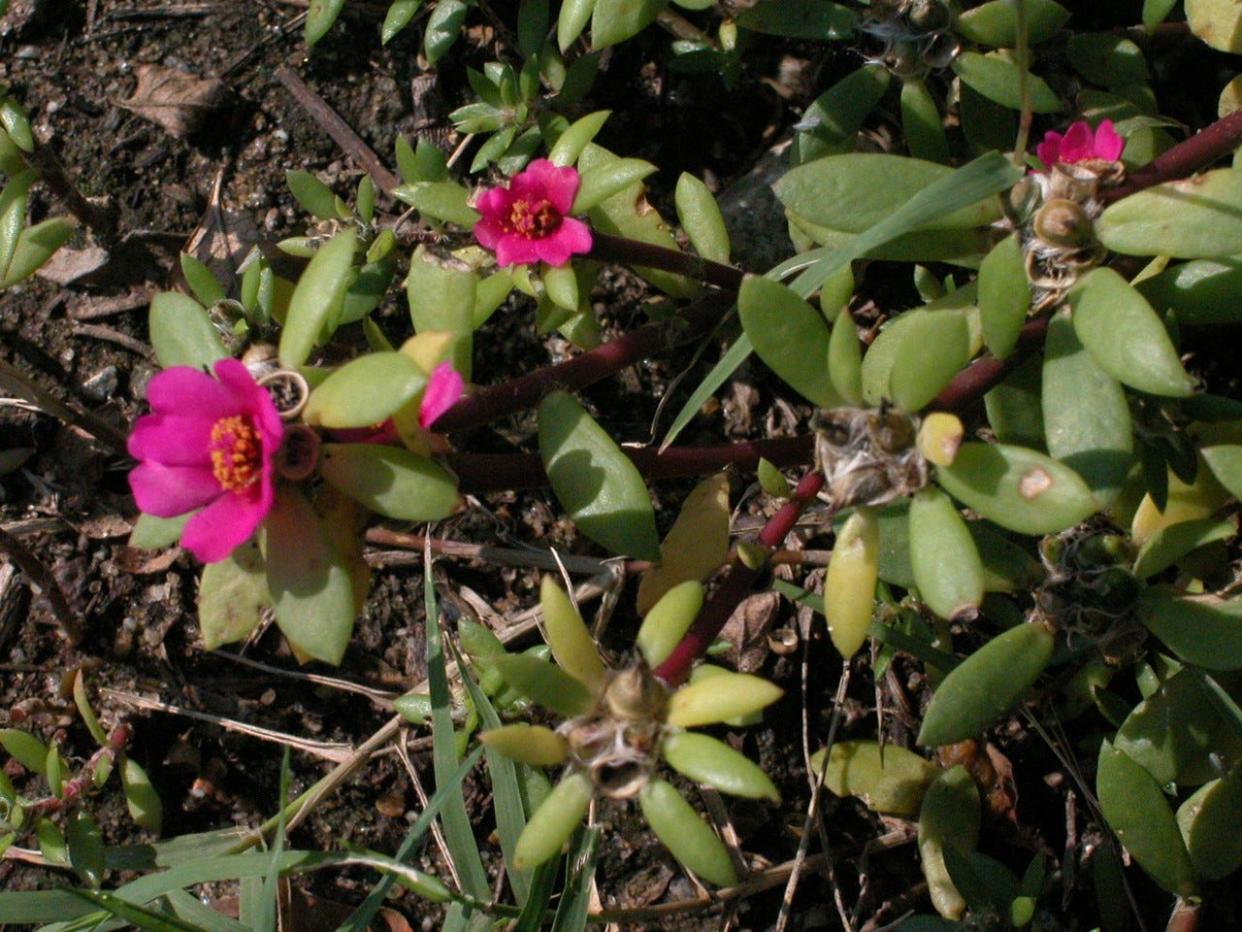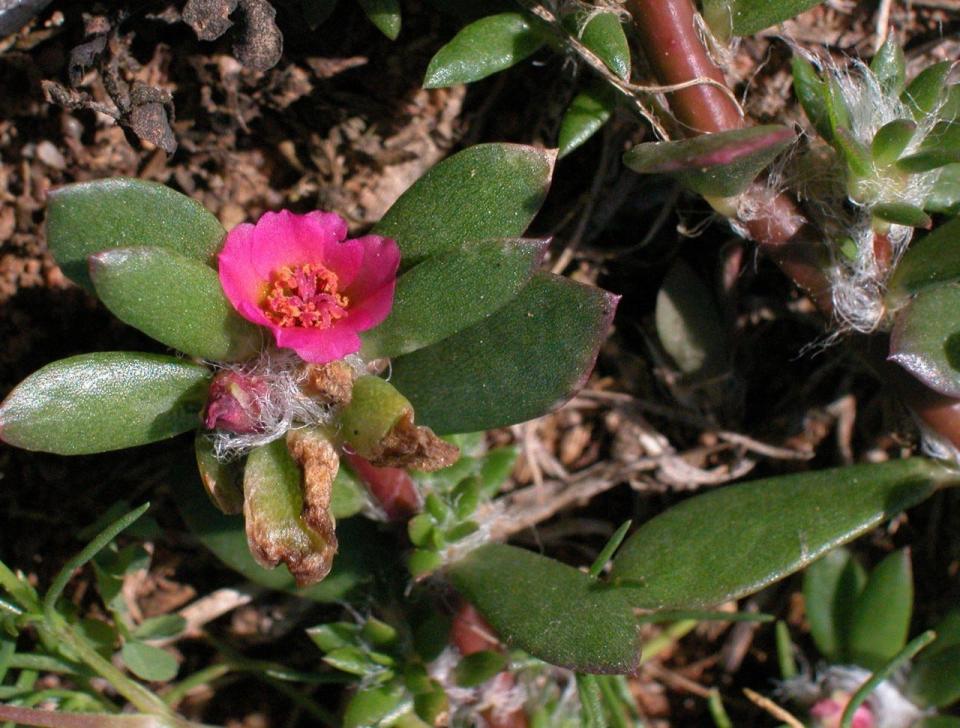Look closely, and quickly, to enjoy this flower's vibrant beauty | Mystery Plant

If only the flowers were a little bigger!
Five brilliant pink petals emerge from an inconspicuous green calyx. Each vibrant blossom contains about 10-12 prominent stamens, each with a bright yellow anther. The style is divided at its summit into a number of branches, usually five or six, and these radiate outward, forming a sort of star-like pattern.
This beautiful little flower — pink purslane (Portulaca amilis) — is hard to miss when fully open, but that occurs only on sunny days, as the blooms don’t like cloudy or rainy weather.
Once the flowers are open, though, the petals don’t last long, and after about one day they and the rest of the flower sort of sag away into a little mess, this eventually drying up and basically disappearing.
Georgia savory: Mint family member a pollinator and nice ornamental | Mystery Plant
Monarch butterflies: What to know about the plight of the threatened species
Beyond waterlilies: Here's how to beautify your pond, support wildlife with native plants
What’s left would be a rounded capsule, plump and green, and only about half an inch long. The round capsule opens in an unusual way: Instead of breaking open down the sides along lines, like most capsules, this has the upper half separate cleanly, like a small, pointed lid (or like the pointy cap of a tiny garden elf).
There are plenty of really small, black seeds inside, and once the lid is off the capsule, the seeds sprinkle out quickly. These seeds are readily spread, being so small, and it is for this reason that the plants get around easily.
This particular species is a native plant in South America, and of course, that means that it is introduced here in the Southeast. Researchers have postulated that it first showed up in North Carolina in the 1930s. Since then, it has spread itself into Virginia and Florida, and there seem now to be reports from Mississippi as well.

Pink purslane is basically a weed, commonly seen on sandy ground, often in agricultural settings, and seemingly enjoying these hot (and often dry) summers. It’s an annual, blooming all summer and into the fall, spreading by those little seeds, and could reasonably be expected to eventually end up elsewhere. The stems may be flat on the ground, or somewhat elevated, thus forming patches.
This plant has about 10 close relatives in North America, and there are plenty of additional ones elsewhere in the world, maybe a hundred or so. Some have yellow flowers rather than pink ones. Some of them are popular as a food source, and the fresh leaves are frequently used raw and in salads, or cooked in soups.
You might notice a similarity between the flower pictured and those of certain hanging-basket plants you can buy at a garden shop. This is no accident. Our little weed has several related cultivated varieties, but the cultivars always have bigger flowers. And more of them.
So, our beautiful little weed will have to be happy showing off its gorgeous flowers way down on the ground, several feet below most people’s eye level. Most of us would only pay attention to it while pulling it out of the garden and flinging it onto the compost. But the flowers really are pretty. You’ll need a hand lens to see them closely, as this flower will never make it into a corsage.

John Nelson is the retired curator of the A.C. Moore Herbarium at the University of South Carolina in Columbia, S.C. As a public service, the Herbarium offers free plant identifications. For more information, visit www.herbarium.org or email johnbnelson@sc.rr.com.
This article originally appeared on Tallahassee Democrat: Look for pink purslane's vibrant beauty on a sunny day

